WE KNOW AFRICA
Welcome to the African Travel safari blog. In this space, we share inspirational stories and ideas on adventures in Africa, plus our latest social posts!
Getting Catty at Sabi Sands Game Reserve
Getting Catty at Sabi Sands Game Reserve
The following story by journalist Dana Hammond, a member of the Society of American Travel Writers and a regular contributor to AAA publications, first appeared in Horizons magazine. Or, Horizons and Your AAA magazines.
People say a leopard can’t change its spots, but I say watching a leopard can change people. I saw that happen for myself while on a safari with African Travel at the renowned Sabi Sands Game Reserve in South Africa. Bouncing across the wild tundra in an open safari vehicle with just a few like-minded souls, we were homebound for the eco-chic Sabi Sabi Earth Lodge after our first exhilarating game drive. Visions of mud-splashed hippos, lumbering rhinos, elephants of all sizes and myriad antelope already decorated our memories.
As we drove the air swirled around us like an embrace, still warm and welcoming as the the last wisps of sunlight left the sky. Then, seemingly out of nowhere, a bright beam of light caught the eyes and eventually illuminated the full coat of a leopard on the prowl. Surely Mother Nature took her most fashion-forward stance when she dressed the leopard in such spectacular finery from head to toe, and I couldn’t help thinking we were privileged to spy the ultimate cat walk. Our tracker spotlighted the animal for only a brief moment. It was simply a glimpse of what was to come.
Sabi Sands sits adjacent to the legendary Kruger National Park. Animals roam freely between the vast park and the private reserve, but by all accounts the elusive leopards have developed an extra soft spot for the Sabi Sands area. It’s recognized as one of the best places in the world to spy the shy creatures.
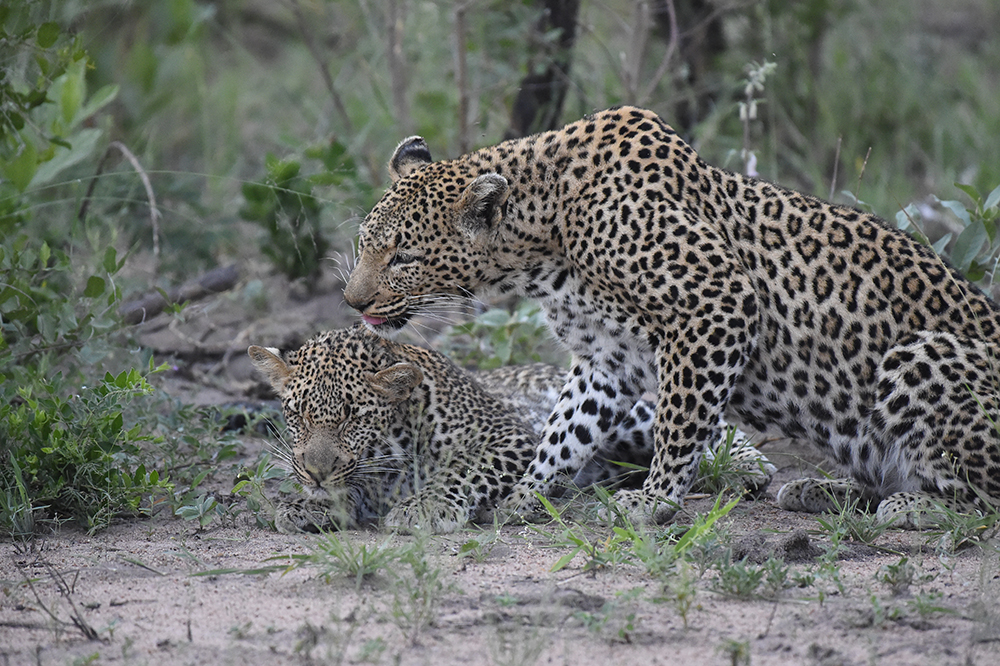
During our first morning game drive the area’s bounty continued to reveal itself. A hush fell over our group as we spied a pair of leopards playing and preening in a clearing. Usually leopards are solitary creatures. We watched for several mesmerizing moments before they disappeared into the bush. That encounter would have been enough to satisfy me, but it proved to be another prelude. The next hour flashed by in what seemed like a minute. It started with a single leopard snoozing on a termite mound, yet another marvelous scene. But the excitement kept building as the leopard woke up with a series of tooth-baring yawns and then strolled right alongside our safari vehicle to reposition itself atop a tree. As if a fantasy wildlife director were choreographing every move, the leopard seemingly posed in a few different positions and then decided to sprawl out across a limb with its tail dangling freely in perfect repose. It made me want to put down the camera and get out a sketch pad. And, that was telling.
While the leopard was obviously unfazed in our presence, it nonetheless made me feel as if it was obliging in some sense. It was like this amazing creature knowingly let us into its secret world, gave us time to take lots of pictures because that’s what we do in our own tech-centric world, and then challenged all of us to put down the gizmos to absorb the true essence of its being. The raw magnificence, the clarity of primordial power, was palpable. In those moments, I felt connected to Africa. It informed me. I started breathing in its time. And, I created a map in my mind to get back to that place whenever I want to return in a daydream.

All Photo Credits: Kym Hammond
Celebrating Lucille Sive, the Travel Industry’s “African Queen,” on International Women’s Day
Happy International Women's Day
"A woman is human. She is not better, wiser, stronger, more intelligent, more creative, or more responsible than a man. Likewise, she is never less." – Vera Nezarian, Author.
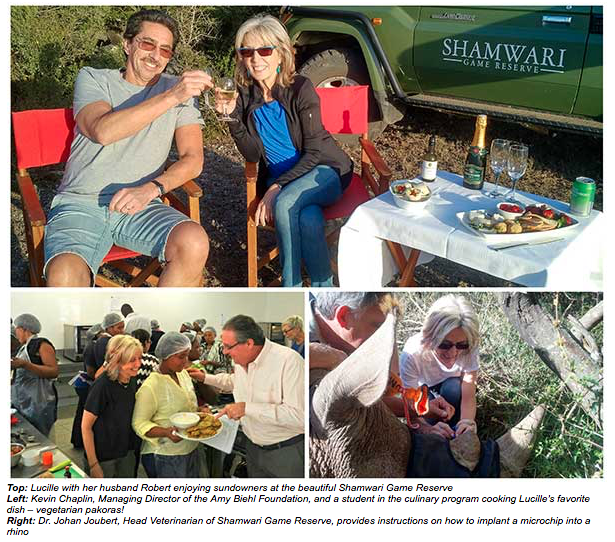
As the world celebrates International Women’s Day (IWD) on March 8th, African Travel, Inc. would like to celebrate and honor one of our very own who has inspired and led The Travel Corporation’s (TTC) Africa Division to the successful company it is today.
Lucille Sive, began her career in the travel industry over 30 years ago at African Travel, Inc.’s sister company, Lion World Travel after immigrating to Toronto, Canada from South Africa with her husband. Since then, Lucille has tirelessly worked to successfully promote and grow the business in the North American market. This could not have been an easy feat for a blonde hair, blue eyed, 5’1” (ish) woman in an industry, at the time, dominated by men.
Through hard work, dedication, making mistakes, learning as you go and staying true to oneself, Lucille has led a very successful career with many career highlights including becoming the first female executive in North America outside of the Tollman family, receiving the 2012 Ubuntu Career Achievement Award and also the TTC Mike Ness Award in 2010 – an award that is presented to an individual within TTC who exemplifies aggressiveness in finding new sources of business, living ‘never-say never’ and who has an outstanding bottom-line focus. In addition, Lucille has led many sustainable and responsible travel initiatives in Africa and these are what she is most proud of and what she holds closest to her heart. Some of Lucille’s favorite partnerships include working closely with game reserves in South Africa to rehabilitate and conserve the rhino population and partnering with Khayelitsha Cookies, a micro-business in Cape Town led by women, where the proceeds of the cookies we purchase as welcome gifts for guests go directly towards supporting the Khayelitsha community. She is also passionate about The Amy Foundation, which provides after-school programs in dance, drama, sports, music, cooking and more to children living in vulnerable communities around Cape Town.
In honor of IWD, we not only wanted to highlight Lucille’s many incredible achievements, but also celebrate a woman who has paved the way and serves as an example of success for other women. This year’s #BeBoldForChange IWD campaign calls for explaining that exact moment when someone took bold action to help improve or develop an aspect of their own livelihood, career or business, so we asked Lucille to share her boldest moment.
- What was your bold moment?
I’ve had a lot of bold moments, but my boldest moment was probably when I started working at Lion World Travel. In South Africa, I was a mathematics and drama teacher. After moving to Canada in 1982, I would have had to re-do all of the required qualifications in order to continue teaching. I decided to do a travel course instead and convinced the manager (at the time) at Lion World Travel that I could do marketing. It was the boldest moment of my career because I was completely changing career paths and starting in a new industry, all while getting accustomed to life in a new country.
- How did you do it?
I can say that I’ve always been a go-getter, but I think I was able to take bold action through self-confidence and determination. Of course, I knew nothing about marketing or the travel industry when I first started working at Lion World Travel, but I believe that one never stops learning. So that is what I did, I learned and learned and was able to show that I could grow the business and after 2 years, I was asked to manage the company.
- What motivated you?
Before moving to Canada from South Africa, I had never travelled outside of the continent. At the time, I wanted to get a job in the travel industry so that I could see the world. After 32 years, I’m proud to say that I’ve travelled quite extensively, but I’m especially proud that I’ve also been able to promote and encourage travel to my home continent through African Travel, Inc. and Lion World Travel.
- How can others learn from this?
I think what others can learn is that they should just go for it. I think it’s too often that people are afraid of failure, especially women. When we do fail, it is one of the greatest learning opportunities. I always say that we should make lemonade out of lemons – so much so that I got a juicer as a holiday gift.
Affectionately known in the travel industry as “The African Queen,” Lucille is thrilled that she has been able to spend her career helping others discover the continent that she grew up on. And on this International Women’s Day and also her birthday, we’re proud to salute Lucille and her incredible accomplishments.
Better Than Betty Davis Eyes
Better Than Betty Davis Eyes
The following story by journalist Dana Hammond, a member of the Society of American Travel Writers and a regular contributor to AAA publications, first appeared in Horizons magazine. Or, Horizons and Your AAA magazines.
The eyes are the windows to the soul, but a tracker’s eyes reveal so much more. I met my local Shangaan tracker just before embarking on the first of several game drives at Sabi Sabi Earth Lodge, a super-chic yet ecologically savvy outpost ensconced within the Sabi Sands Game Reserve. Throughout this private swath of land, geographically integrated with South Africa’s legendary Kruger National Park, wildlife roams freely and so do guests on safari in open-air vehicles. This freedom to travel off-road, with a knowledgeable ranger behind the wheel and a seasoned tracker out front (basically seated on the bumper!) ranks as one of the best reasons to choose a private reserve.
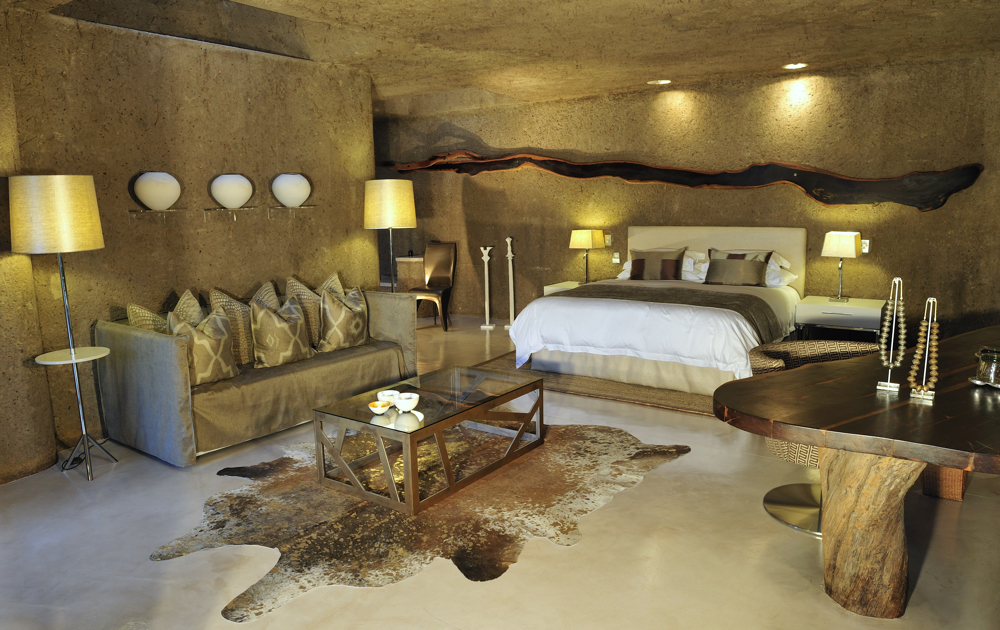

My safari group, a fun foursome, developed a deep affection for Africa through the relationship we shared with our ranger and tracker. Aside from the obvious thrill of spotting wild animals in their natural habitats, one of the most enjoyable features of going on safari is stopping in the middle of the unspoiled bush to enjoy a steaming drink in the morning or a classic “sundowner” in the afternoon. You get a chance to stretch, inhale the splendor of the setting, and socialize with your ranger and tracker. They host these intimate affairs, spreading out scrumptious snacks on the hood of the safari vehicle and serving up the drinks.
Going on safari is a powerful bonding experience. You meld with the group and certainly become one with the land. This synergy seems instantly palpable. It’s also been sanctioned, quite literally, by lion kings and other territorial cats in the Sabi Sands area that have become habituated to safari vehicles, viewing them as single, non-threatening entities as long as passengers remain seated. That set of circumstances sets the stage for spectacular, up-close encounters with some of the most elusive cats and practically ensures you’ll see Africa’s “Big 5” -- buffalo, elephant, leopard, lion and rhinoceros -- during a typical three-night safari. I spied them all in just two days.
Our ranger’s face was the first one we saw in the morning and the last one we saw at night. He delivered a personal wake-up call at our door before dawn and escorted us back to our suites when we decided to retire in the evening. Mindfully built into the rise of a berm, Earth Lodge practically disappears into the rugged landscape despite it cushy features for humans (think private plunge pools, sublime indoor/outdoor showers and egg-shaped stone soaking tubs in all 13 suites, a full-service spa, a wine cellar, gourmet dining within eyeshot of an active waterhole and several lounge areas, including a popular roost with tables scattered amid a footbath). The one thing it doesn’t have is a perimeter fence, so a ranger escort after dark is welcome, especially since elephants and other wildlife have trampled over and around those stealthy suites!
Our ranger offered insight and readily answered every question we rattled off in an eagerness to digest this wild realm, but during game drives it was our more pensive tracker who quietly divined the course by signaling left or right and sometimes getting down on the ground to survey spoors. He had decoder eyes that read the land like a map. They were a generational gift, fine-tuned by his father who had learned the art of tracking from his own father before. For us they became not only a window to his soul, but a window onto the heart of the African bushveld and all its inhabitants.
Going on safari is nothing like visiting a zoo. There are no scheduled shows. Mother Nature sets the pace, but a skilled tracker instinctively has the ability to fall into sync no matter the rhythm. Our tracker never missed a beat. Responding to a chorus of agitated birds, he signaled a sudden stop. A second later we glimpsed a spectacular black mamba, its head raised more than a foot off the ground as the rest of its seemingly endless body slithered behind in a speedy blur. I think even our ranger was impressed with the prowess that produced that sighting. Known as the world’s fastest land snake (more than 12mph), black mambas have spawned legendary tales and their bite has been dubbed “the kiss of death.”
Our tracker seemed genuinely satisfied in that moment, too. His eyes said it. I noticed a similar twinkle after he successfully located a pride of lions. If we had been ticking off notches on our safari belts—and despite best intentions to avoid doing that, we were just a bit—spying a lion was the one thing standing between us and a Big 5 victory. Following a steady beat this time, he slowly and meticulously tracked down a flat-bellied pride that appeared to have just collapsed from exhaustion in a shady spot. Obviously, all their prowling had proved fruitless. The only ones with an ounce of energy were two mischievous cubs trying to nudge a reaction out of their mother.
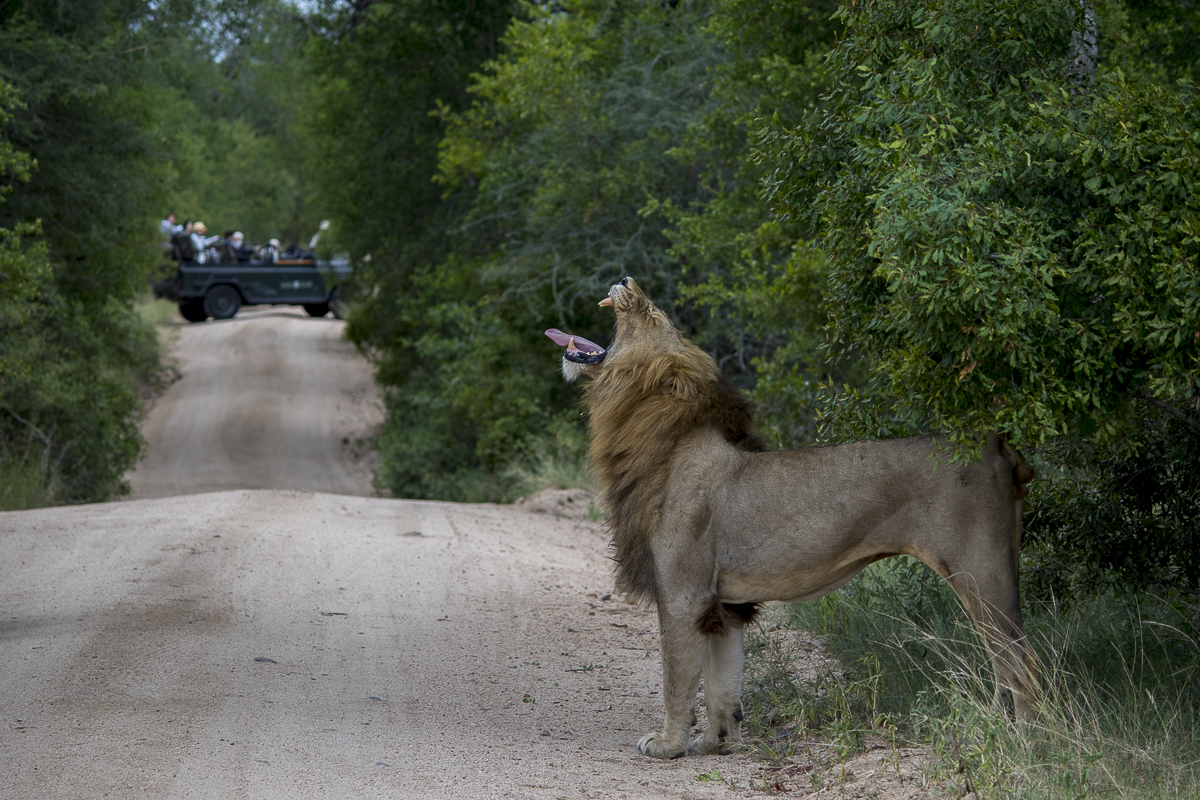
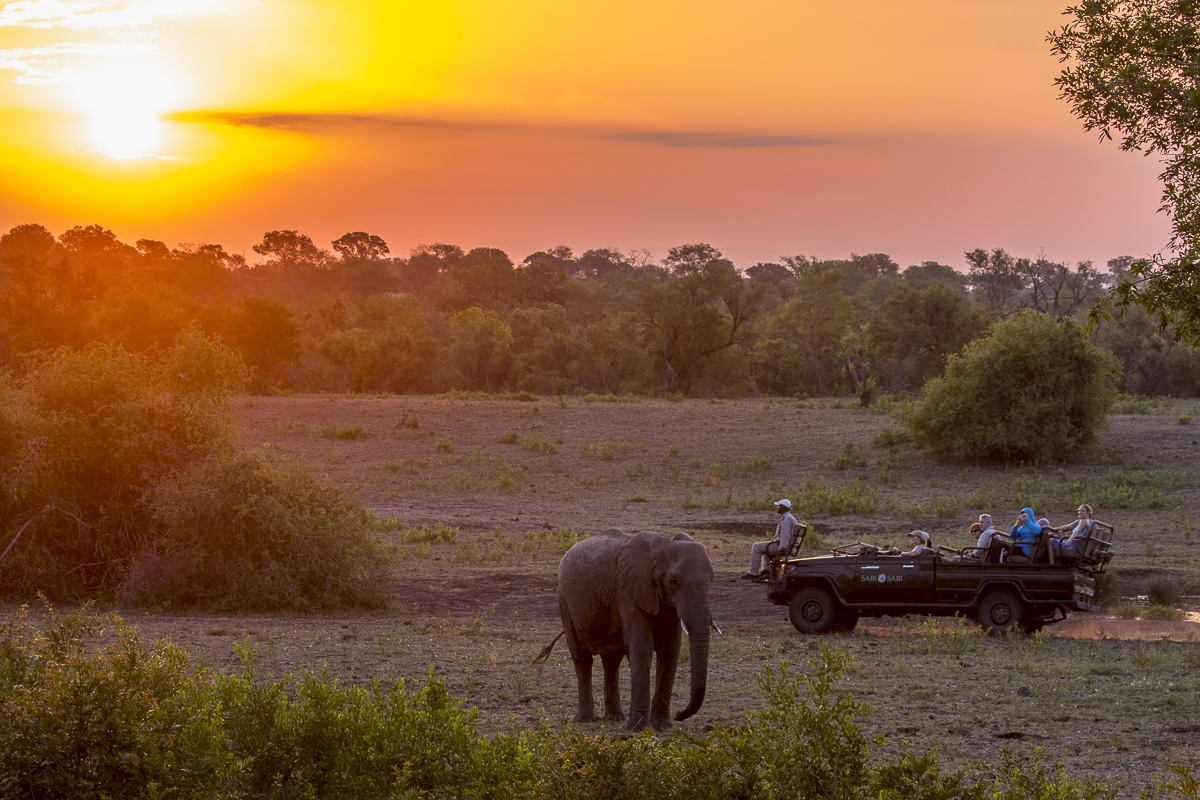
The sagacious look in our tracker’s eyes when one lioness rose up and strolled right in front of that bumper-mounted seat he occupied is something I’ll remember forever. It seemed to balance so many thoughts at once – satisfaction, respect, perspective and much more. For me, it distilled the safari experience, the privilege of being able to witness this wild world as it once was and still endures.
All Photo Credits: Sabi Sabi Game Reserve






